Hello everyone! It’s time now for a guest blog post from that other guy that is walking with Jon. I will be blogging at you about Sarajevo and Mostar. So hold onto your butts because those cities are lit af and I’m a much worse writer than Jon.
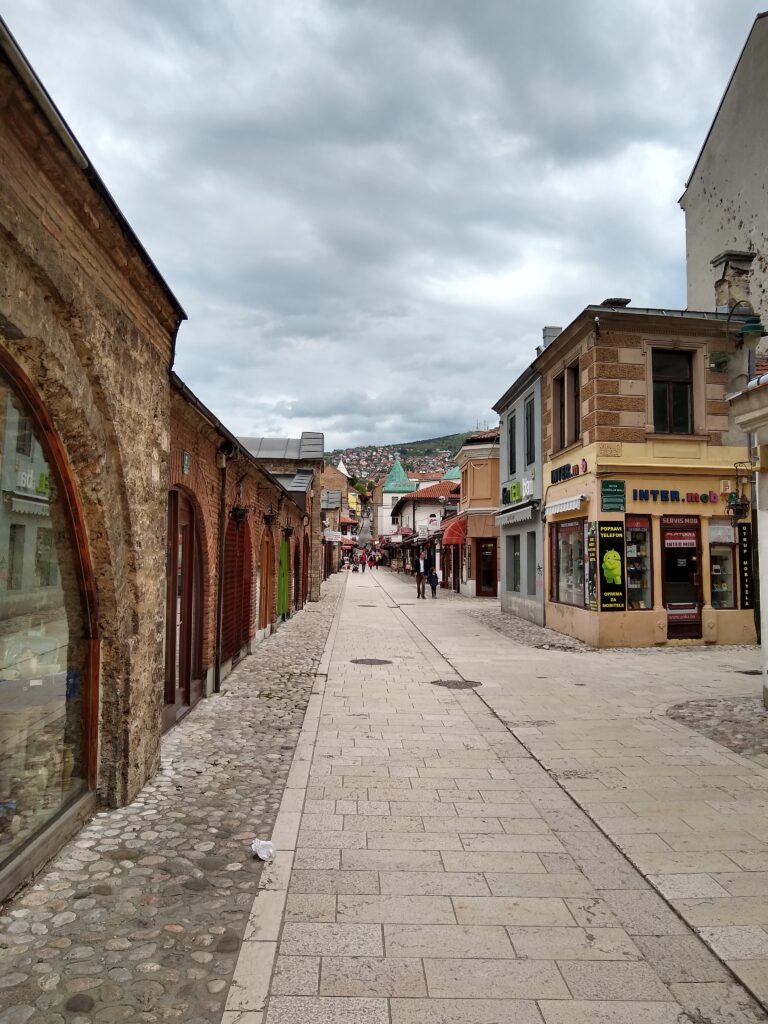
Sarajevo
We arrived in Sarajevo by bus from Split that got in around 8pm. Since it was dark and our hostel was 40 minutes walking away, we ended up sharing a cab with a nice English woman and her Austrian husband who I met on the bus. Lucky us! Or was it? As it turned out, Jon and I’s first minutes in Sarajevo were wide eyed and clamped onto the “oh shit” handles in the back of a rogue taxi while the driver careened all over the road, all while getting in an increasingly heated argument with an Austrian diplomat in broken Croatian about the flagrantly inflated price of the ride. Apparently the driver somehow mistook Jon and I for rich play boys staying at the 5star hotel downtown and was running the meter at like triple rate. Anyway, we didn’t die, but we did find out later during lunch with that lovely English woman (Hey Debbie!) that it actually got physical between the Austrian and the driver and the police were called, apparently without effect.
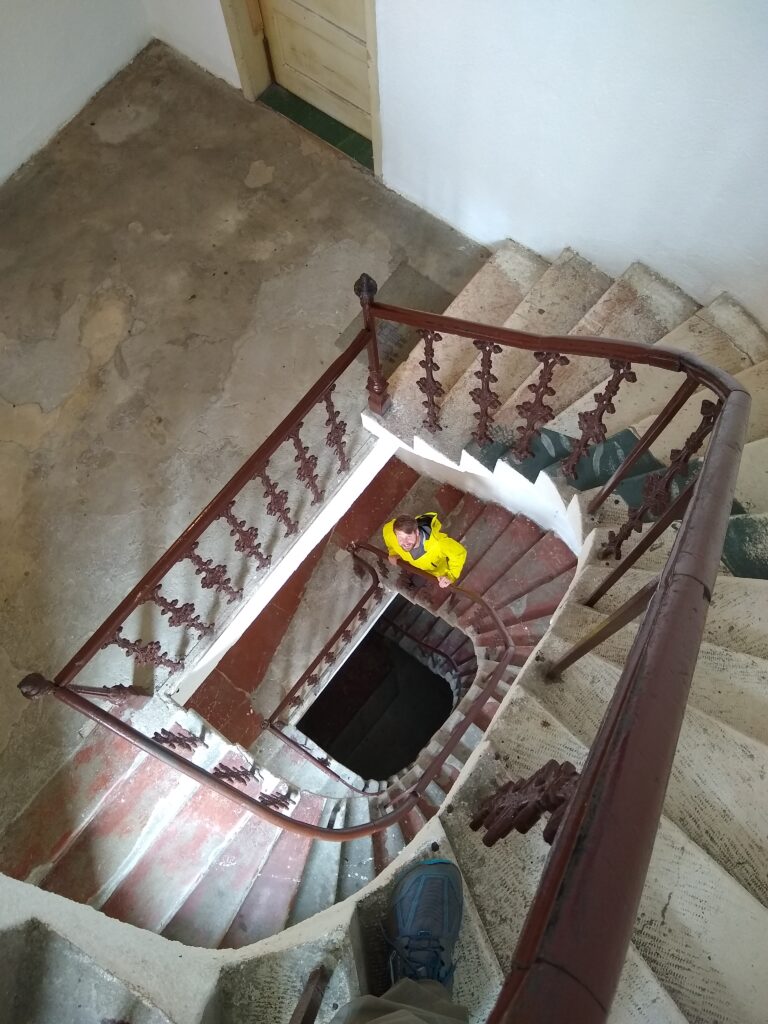
The walk to our (semi-derelict) hostel was no less interesting. It was Saturday night and the bars and cafes were bustling with people. And of course all the bars play either club remixes of American pop hits or club remixes of Turkish accordion music. The weird thing though was not one person had a beer or mixed drink. Hundreds of people out on a beautiful Saturday night at the downtown bars, all drinking Coca cola and coffee. How weird is that?, we thought. It wasnt until the next day we figured out everyone (except us dumb tourists) were celebrating Ramadan and not drinking alcohol all month. Sarajevo is mostly Muslim, but it took us a bit to put it all together.
The next few days we explored the city and found out Sarajevo is a beautiful and fascinating city full of incredible people.
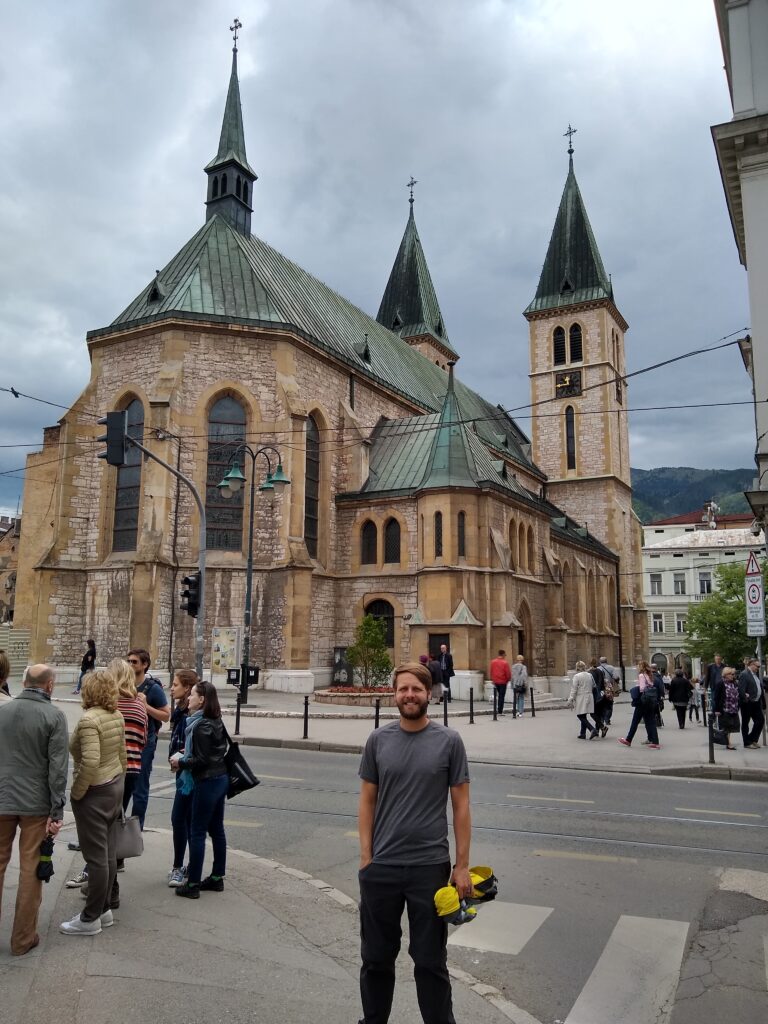
First day in the city, as is our custom, we took a morning “free” walking tour. Our fast talking, somewhat manic, and quite knowledgeable tour guide was named Enes. We liked him so much we signed up for a follow-up tour with him the next day at the Tunnel Museum (soon to be explained). He was a kid during the siege of Sarajevo in the 90s while his family served in the military, and he was personally shot at by snipers while playing with a friend (who was shot). That means he grew up on food and water rations, without power, in a nearly destroyed city where hundreds of bombs and mortar shells rained down every day. Whoa.
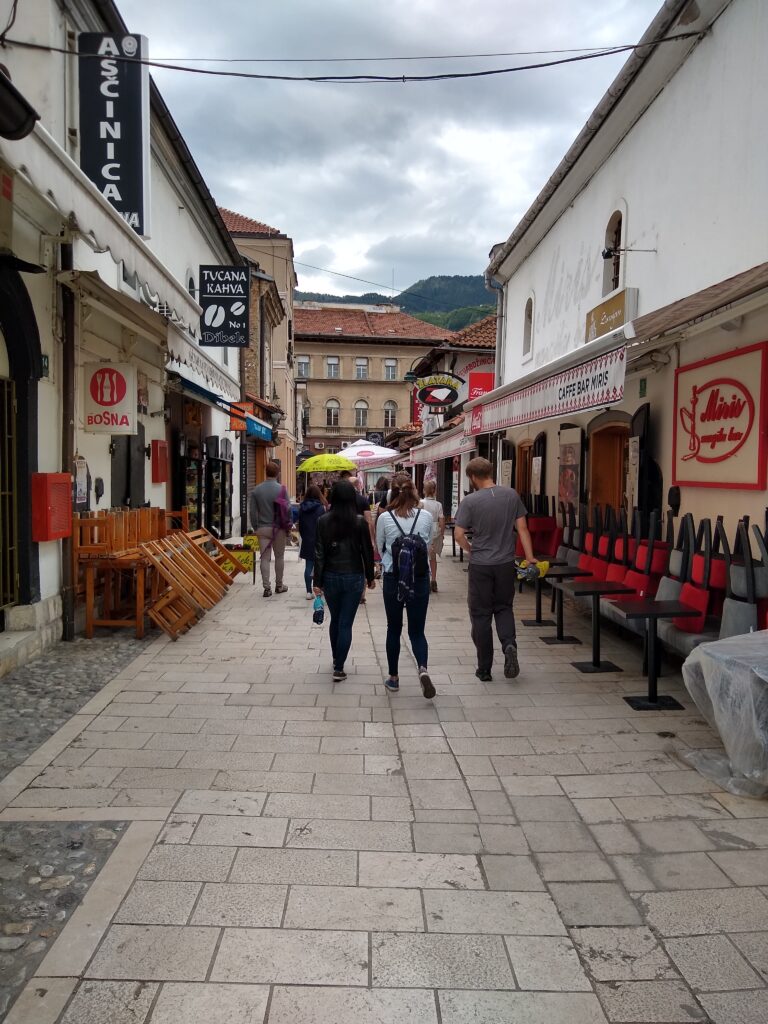
As he guided us around the streets we could still see shrapnel and bullet holes in the apartments and shops, and where the city has installed subtle (but profound) red paint splatters on the ground where particularly nasty bombs fell to show you the awful cost innocent life. It was a moving reminder to see that red stain and holed sidewalk outside a pleasant cafe or market teeming with every day activity.
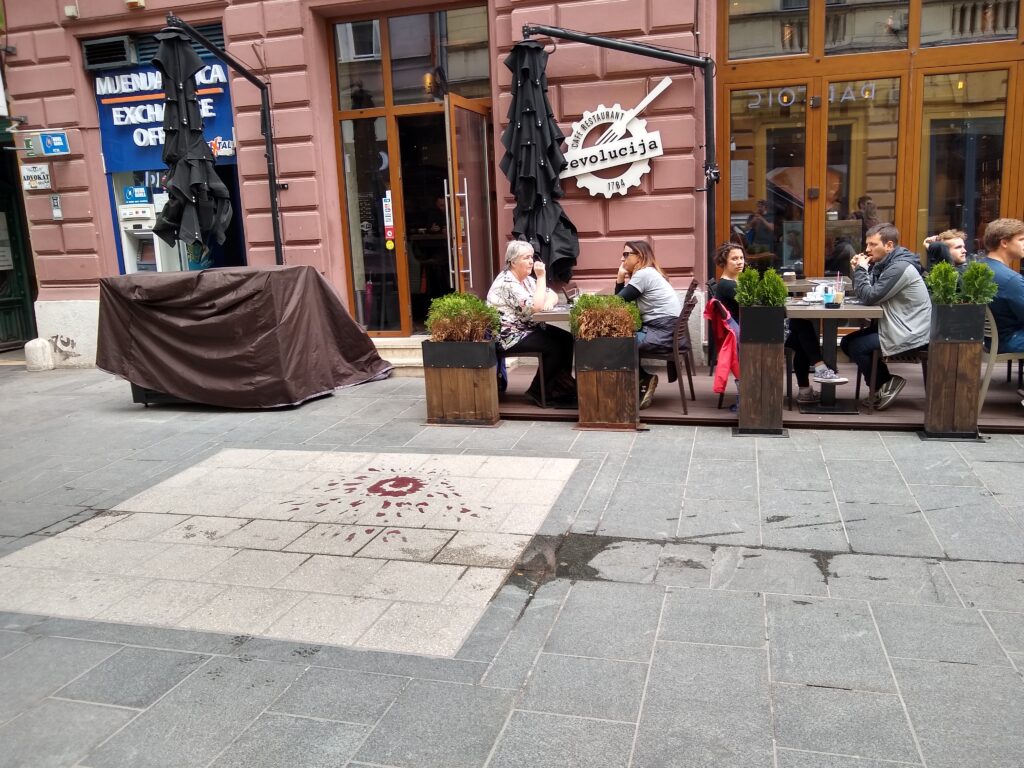
At length, we learned something of the cities’ wild history shaped by multi-religious people, frequent and recent open warfare, and quite a few changes in ownership. For hundreds of years Christians, Muslims, Eastern Orthodox, and Jews all lived in harmony in this one crazy valley ruled by the Ottomans, then the Austrians, and finally by the late Yugoslavia.
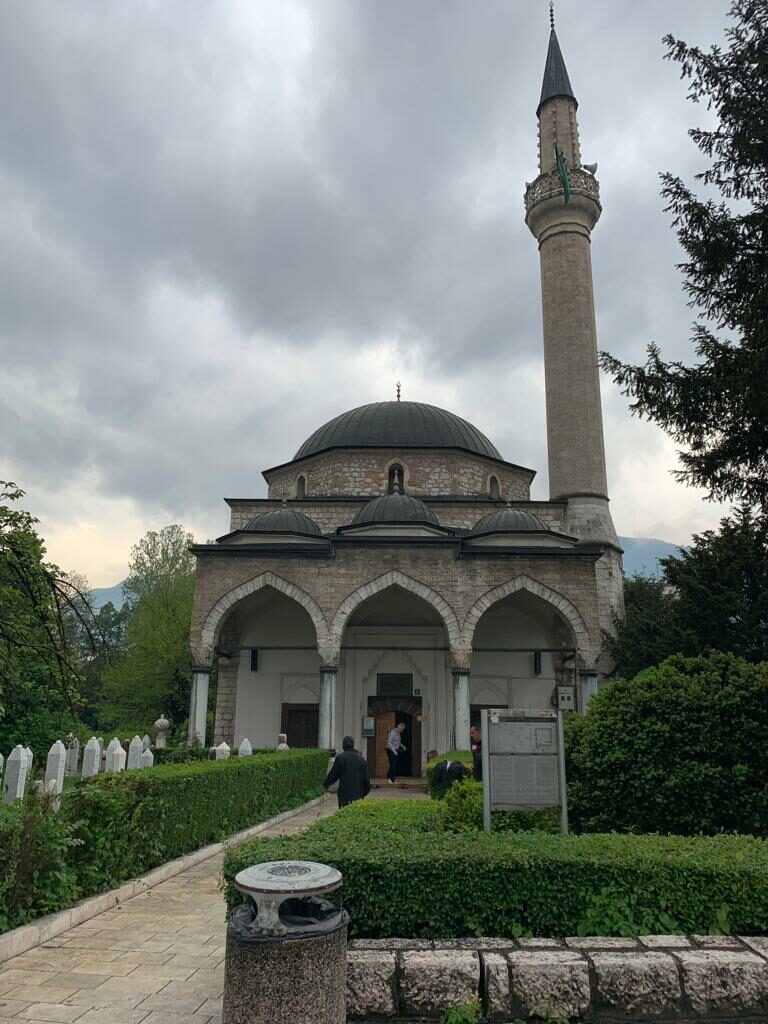
Oh and also it was near razed to the ground and completely rebuilt. Throw in a couple World Wars, the violent breakup of Yugoslavia, and the 84′ Winter Olympics with our favorite mascot ever and the place becomes an absolutely baffling but constantly engaging maze of history and conflict that is absolutely unique. There’s ancient mosques, towering cathedrals, Austrian palaces, Turkish monuments, and right down the street is an unassuming looking intersection where Franz Ferdinand was assassinated igniting WWI.
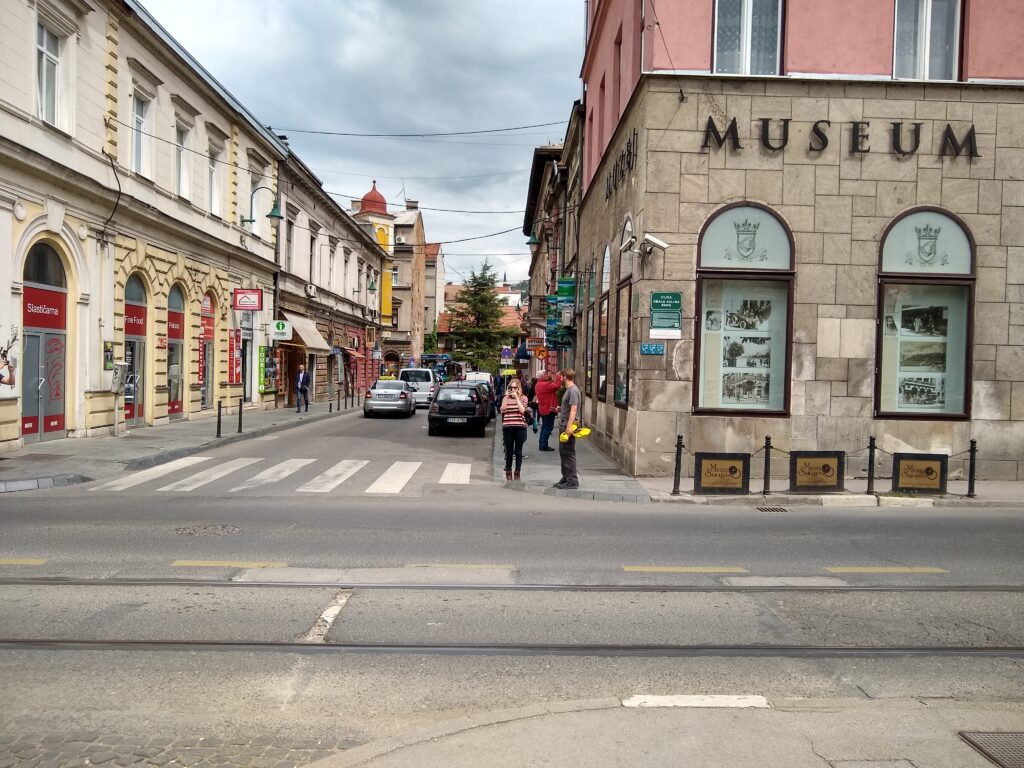 Why not go see the pistol that killed him just hanging out on display after you go try to figure out how Turkish coffee works? It’s a marvel how it all fits in this one city.
Why not go see the pistol that killed him just hanging out on display after you go try to figure out how Turkish coffee works? It’s a marvel how it all fits in this one city.
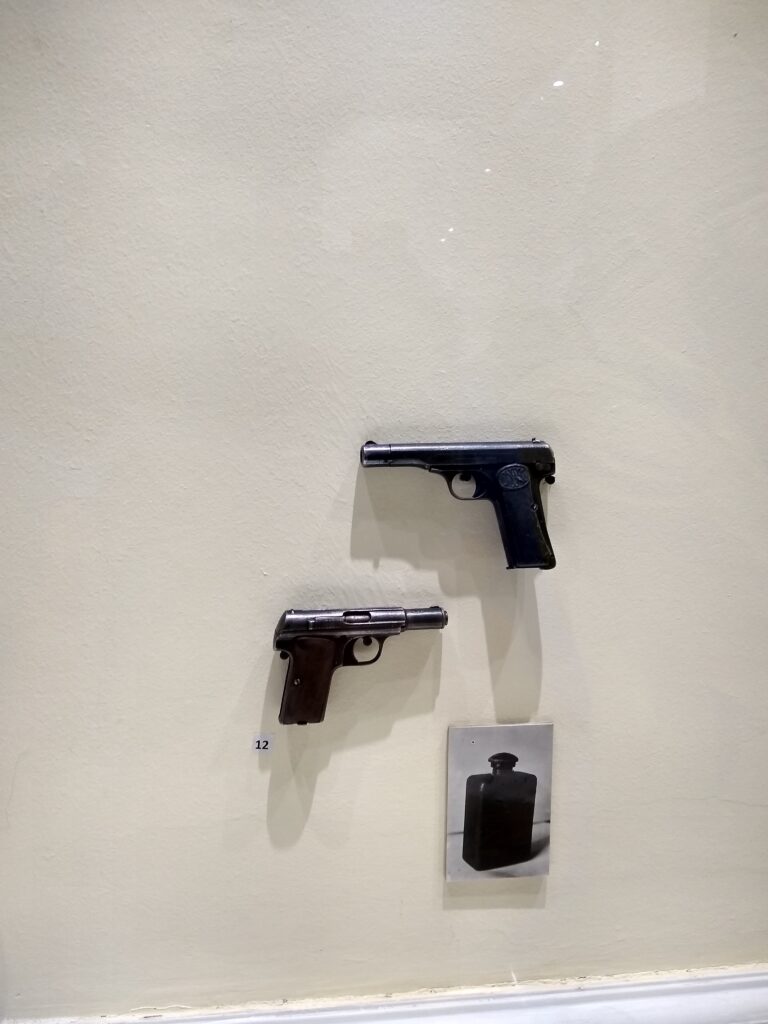
Naturally, after this moving and educational experience, I wanted to go up a mountain! Luckily (for Jon!), the city has rebuilt the Olympic cable car up to Mt.Trebevic overlooking the city and you can just ride up instead of hiking the 3800ft. I’ll ride..this time, but only because the old Olympic cars are so darn cute!
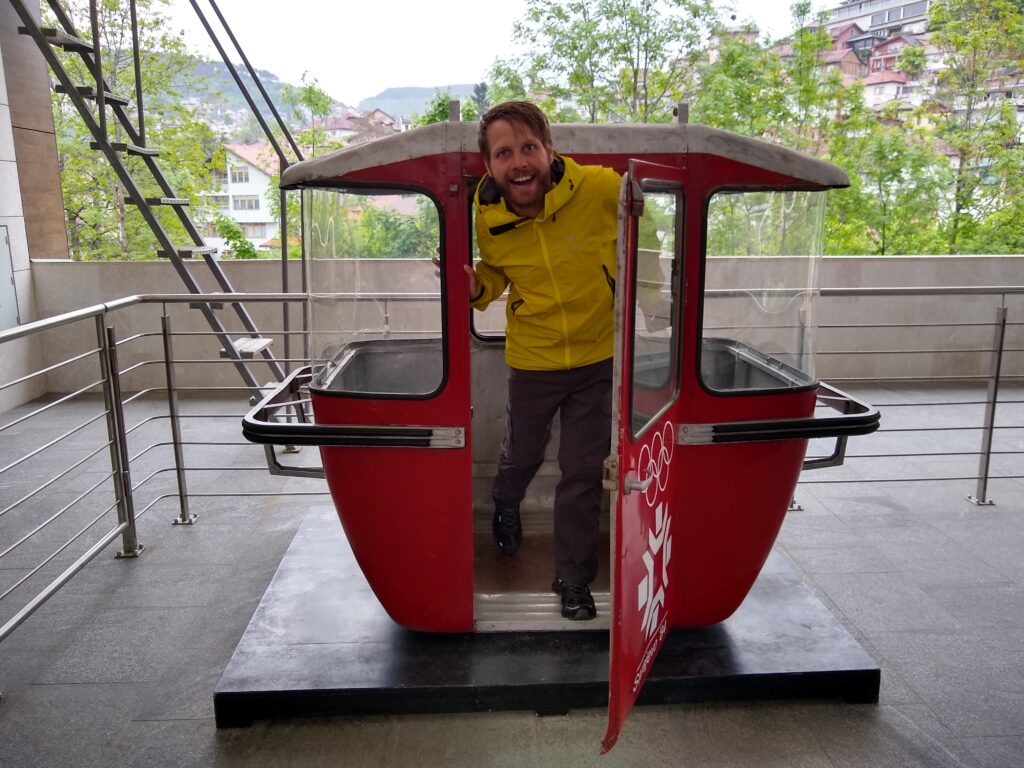
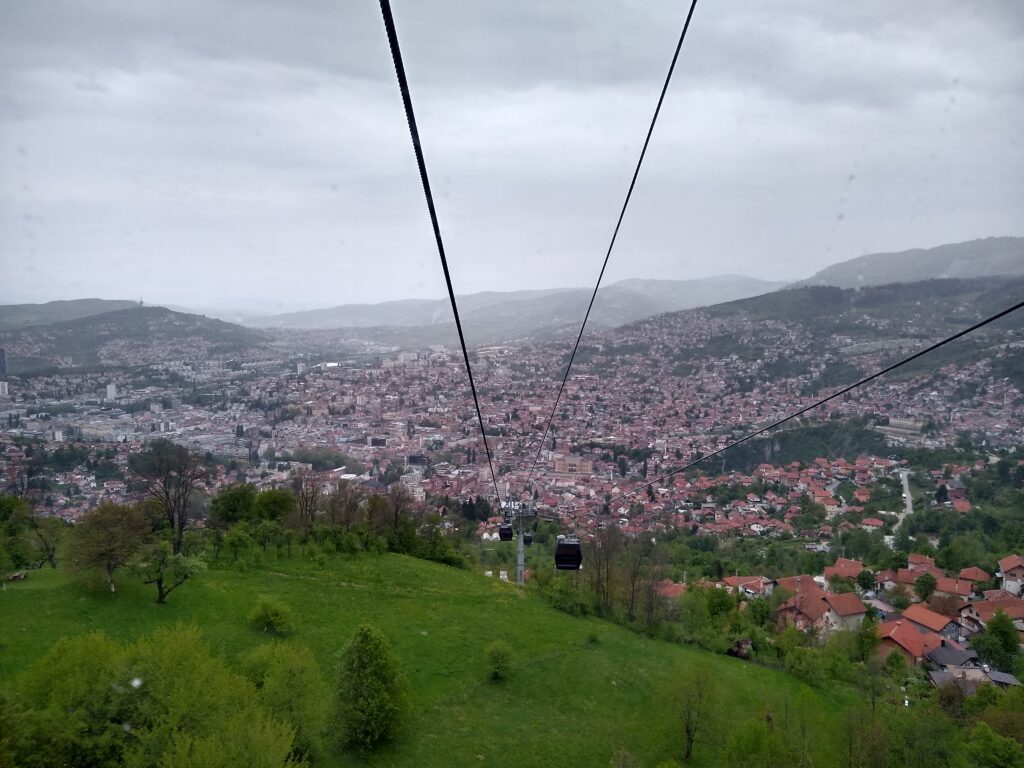
Of course, the views on top and on the way up were fabulous (place is bigger than I thought!), but the real highlight up top is the abandoned bobsled track. Of course that bobsled track, the one from the 1987 Winter Olympics!
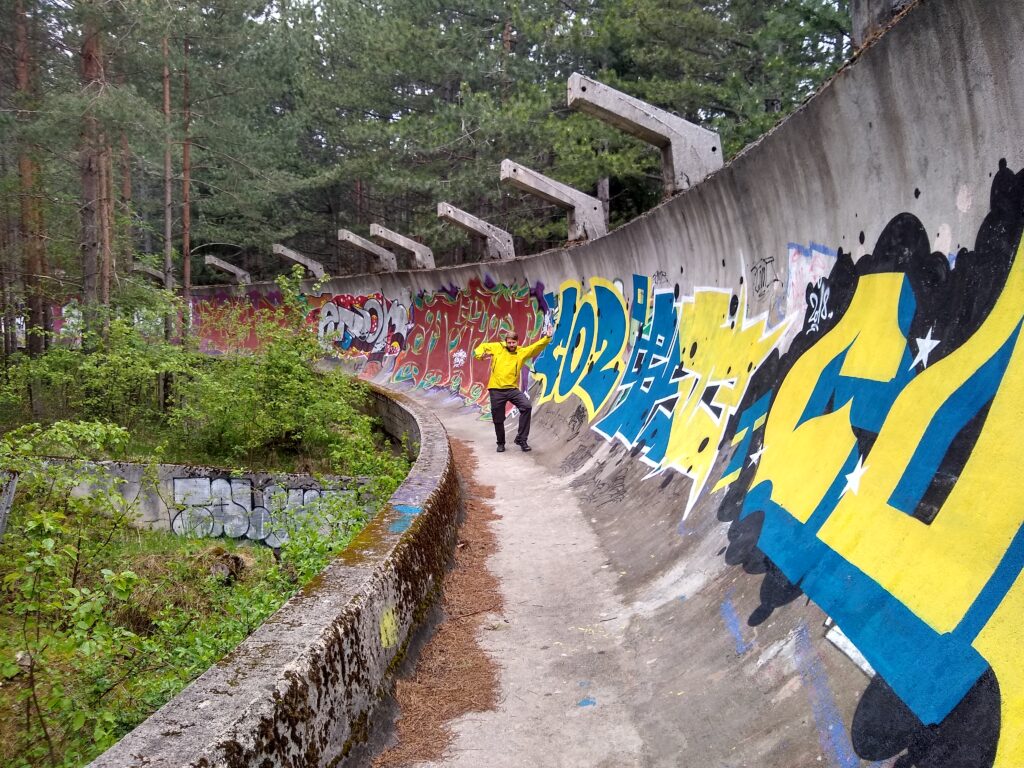
I know it sounds weird, but wandering down this giant, graffiti covered ramp in the woods was freaking captivating. 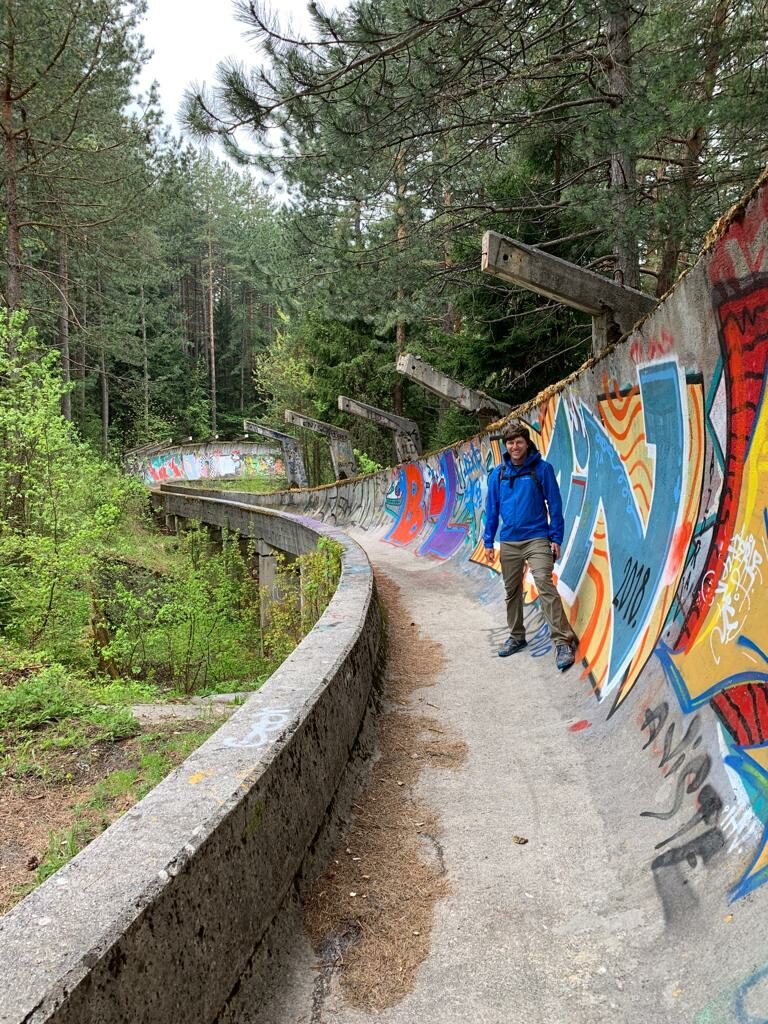 If it were America the whole thing would be cordoned off to protect you from some imagined risk, but in Bosnia you can just walk right up to the starting block, utter the critical phrases we all learned from Cool Runnings that must proceed any bobsled run, and just go right on down! It was raining, but thats just bobsledding for you.
If it were America the whole thing would be cordoned off to protect you from some imagined risk, but in Bosnia you can just walk right up to the starting block, utter the critical phrases we all learned from Cool Runnings that must proceed any bobsled run, and just go right on down! It was raining, but thats just bobsledding for you.
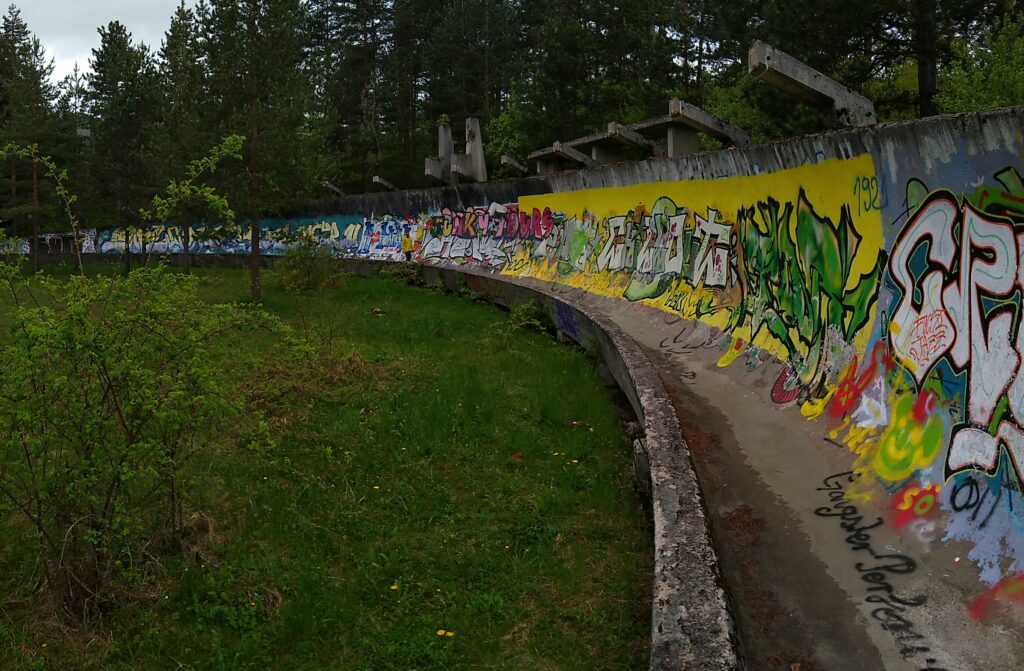
Following the chair ride back down, and I remind you that all this is practically on the same street, we went to the wonderfully reconstructed city hall.
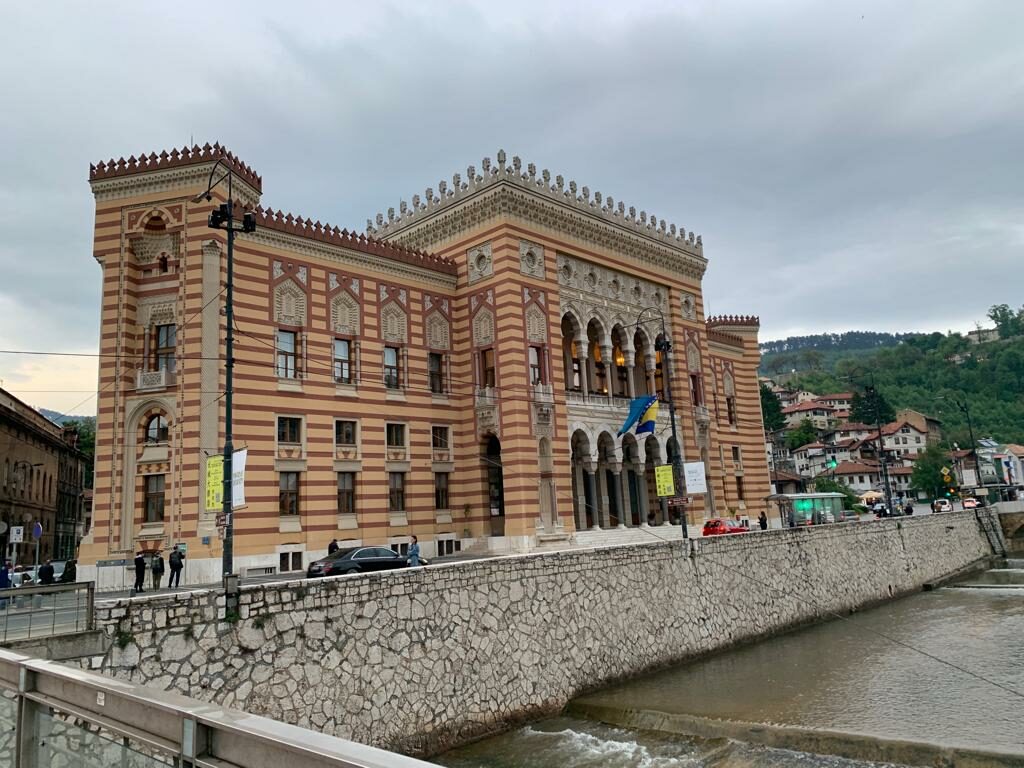
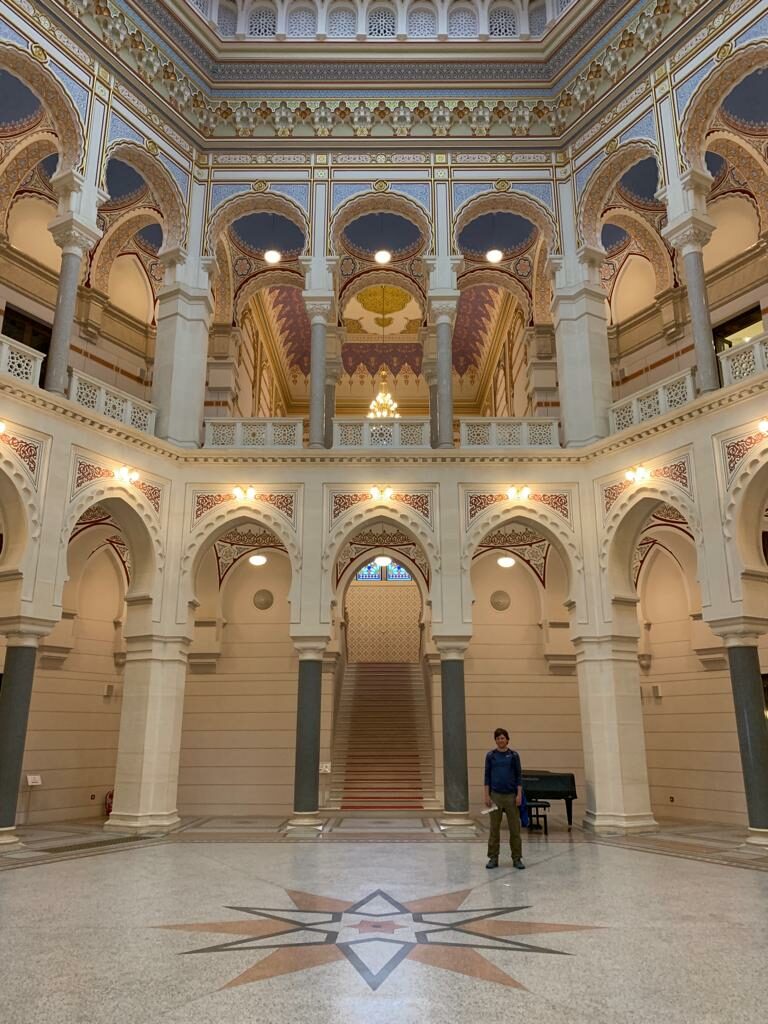 Its like if you decorated the inside of a Austrian art museum like a mosque and replaced all the good art with pictures of old Turkish men.
Its like if you decorated the inside of a Austrian art museum like a mosque and replaced all the good art with pictures of old Turkish men.
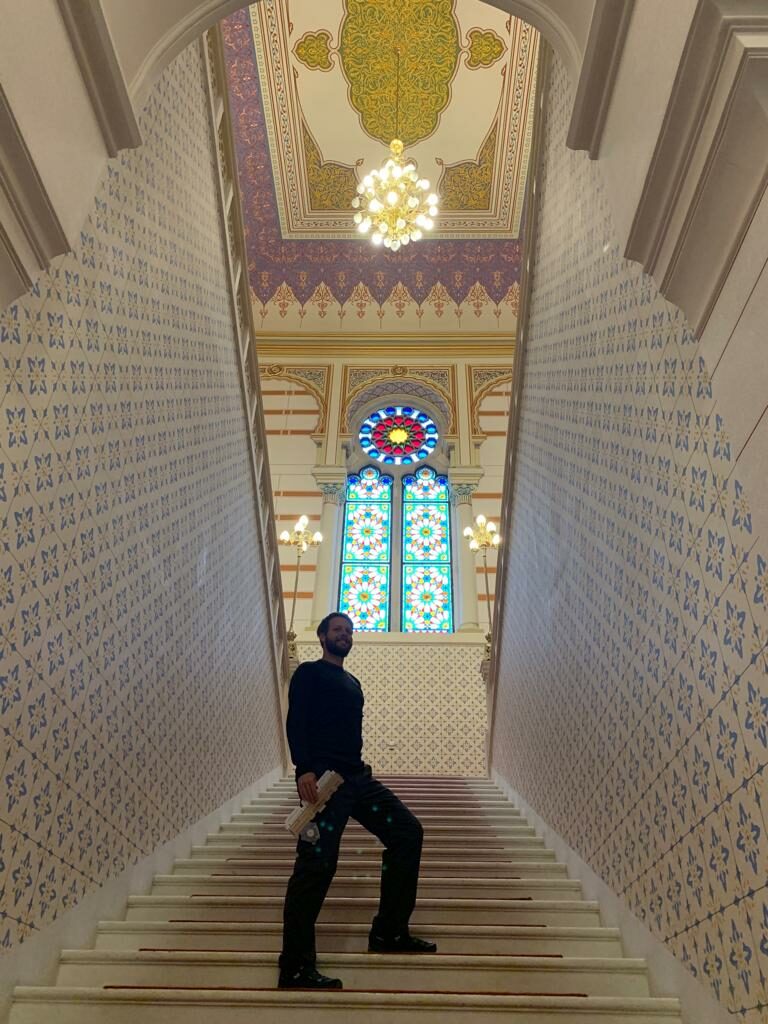
It’s hard to get a grip on it but it’s a lovely building, and in the basement is an overwhelmingly informative historical museum that talks about Sarajevo during Yugoslavia and after independence.
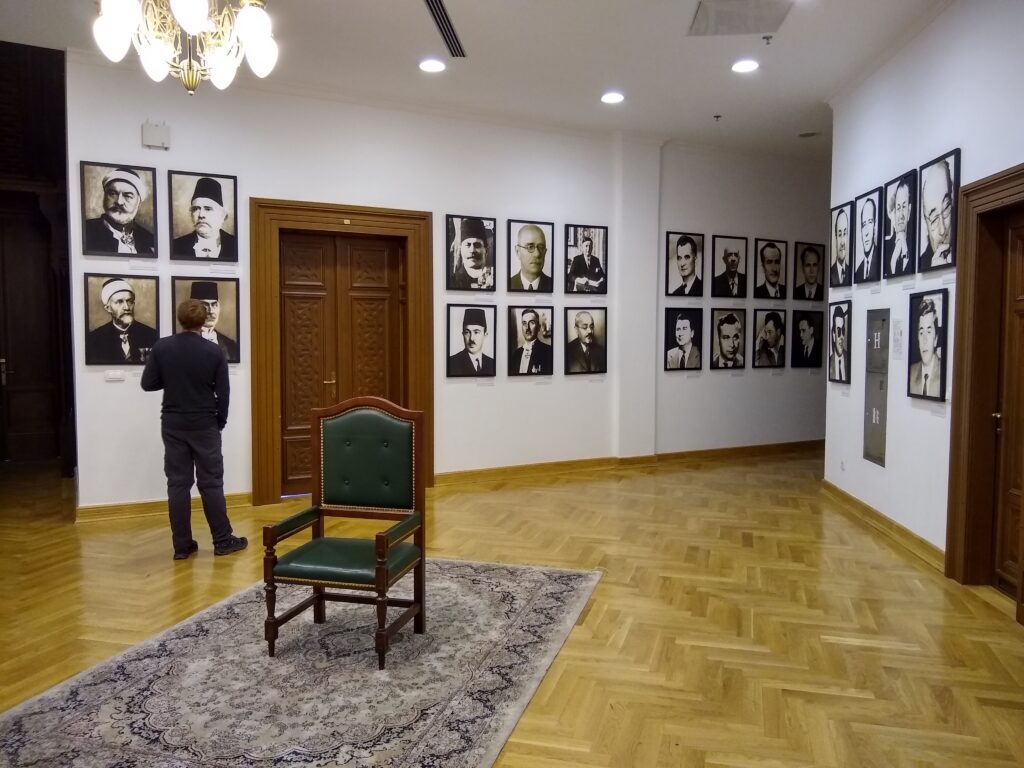
Seeing pictures of the building you’re standing in reduced practically to rubble does give you some pause.
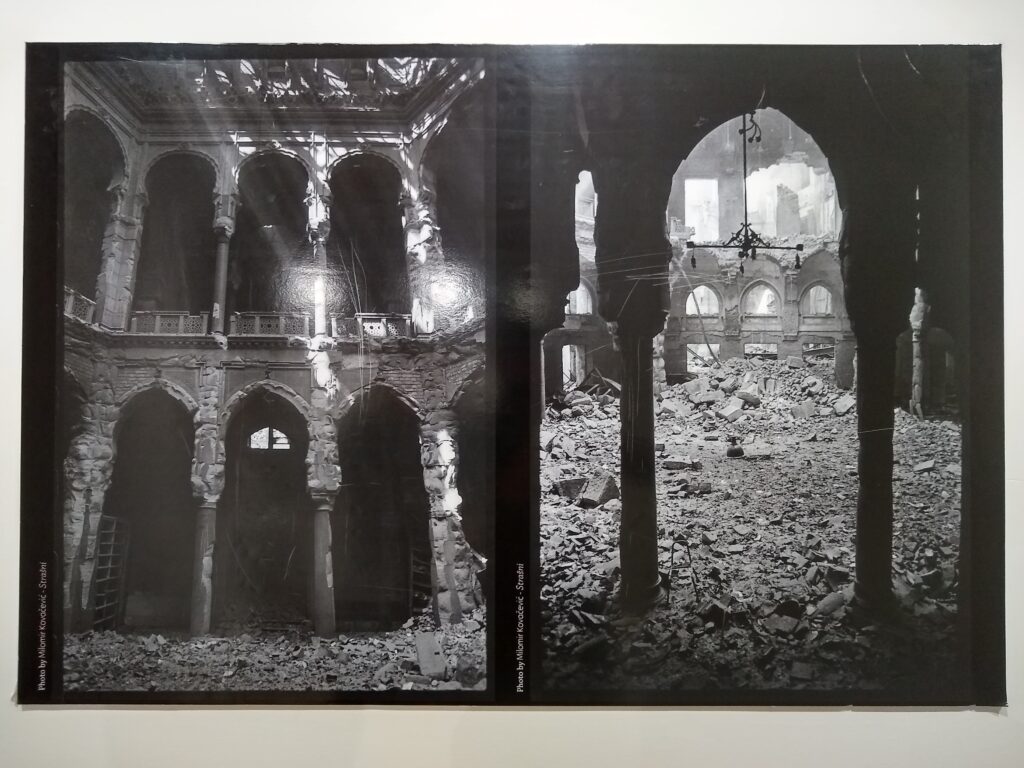
Finally, we walked over to see (and hear!) the Sarajevo Ramadan cannon, which is up a small hill overlooking the city. It even had a sweet little old man working the cannon, who naturally looks like he has been doing the job for a thousand years or so, checking his watch and looking at the sky to know when to fire.
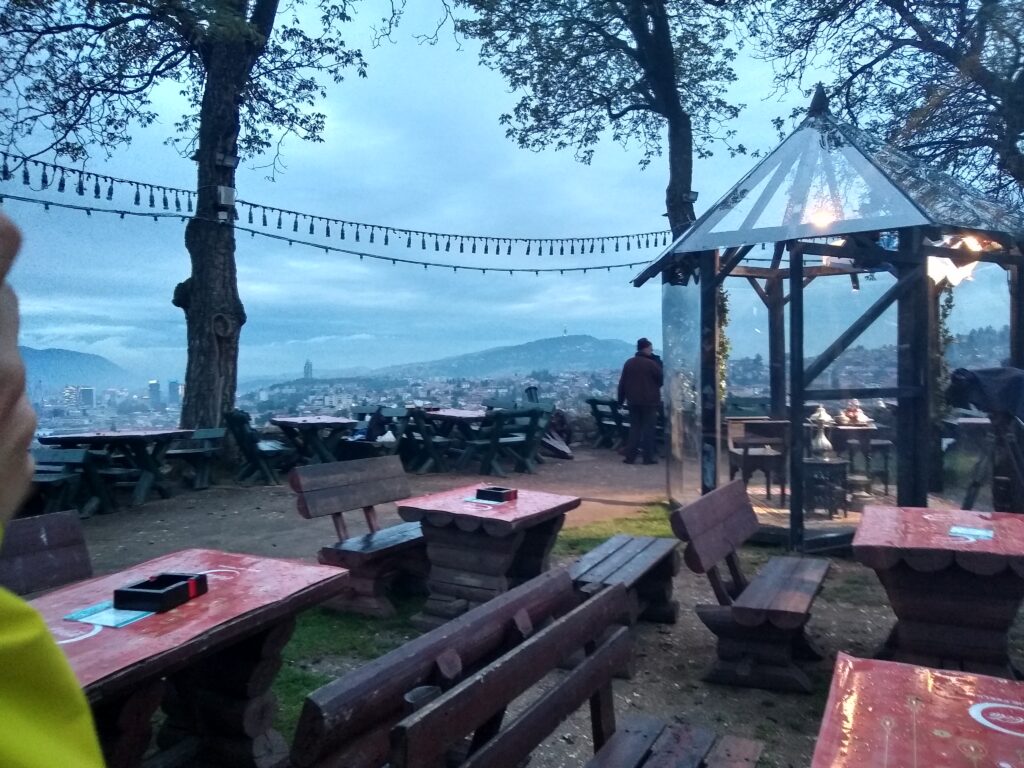
We easily got it pretty close. Between the view, the little old man, and hanging out with a couple a friendly Scots we kept running into (you know who you are!), we had a good time at our first Ramadan cannon.
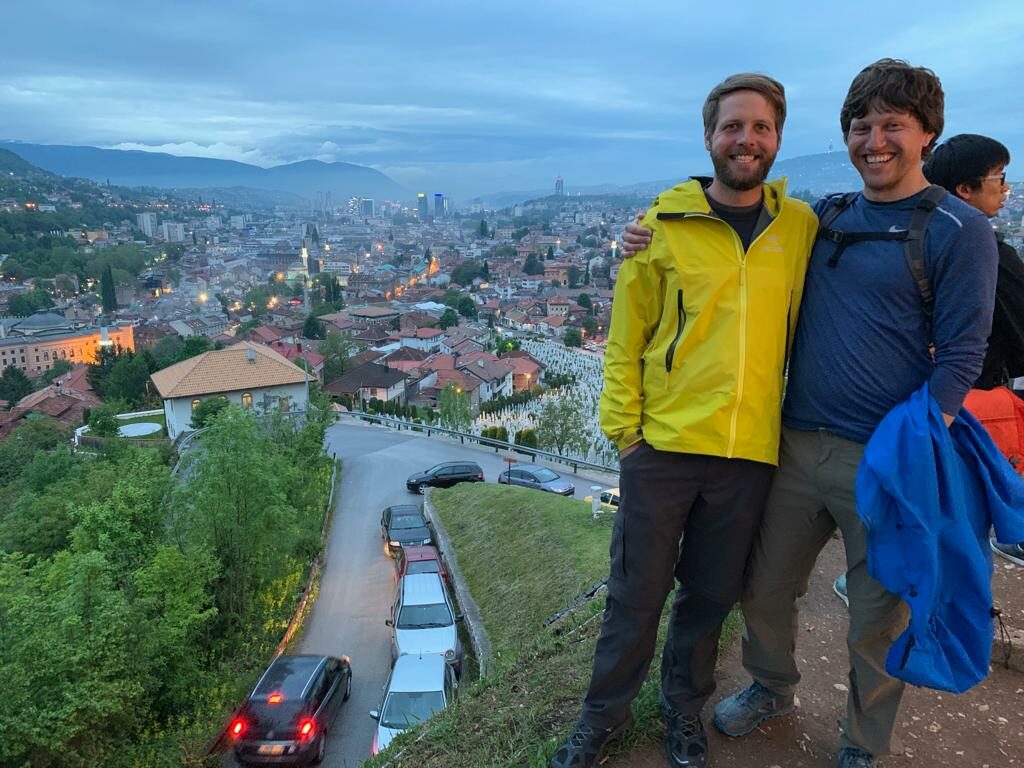
Day two Sarajevo was a bit slower, but still there were milestones. Foremost, we had our first Turkish coffee. It is Turktastic, I tell you.
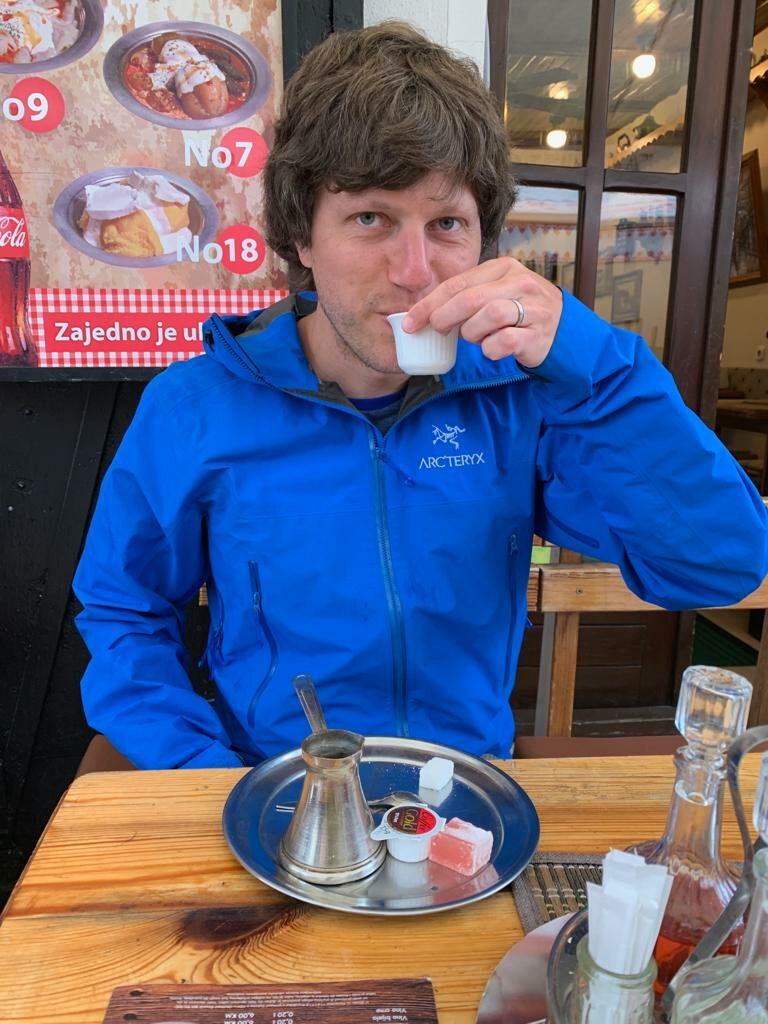
The grounds are actually in the water sitting at the bottom of the big pot like silt or mud, so you have to be careful when you pour the coffee into your tiny cup not to dump out the grounds.
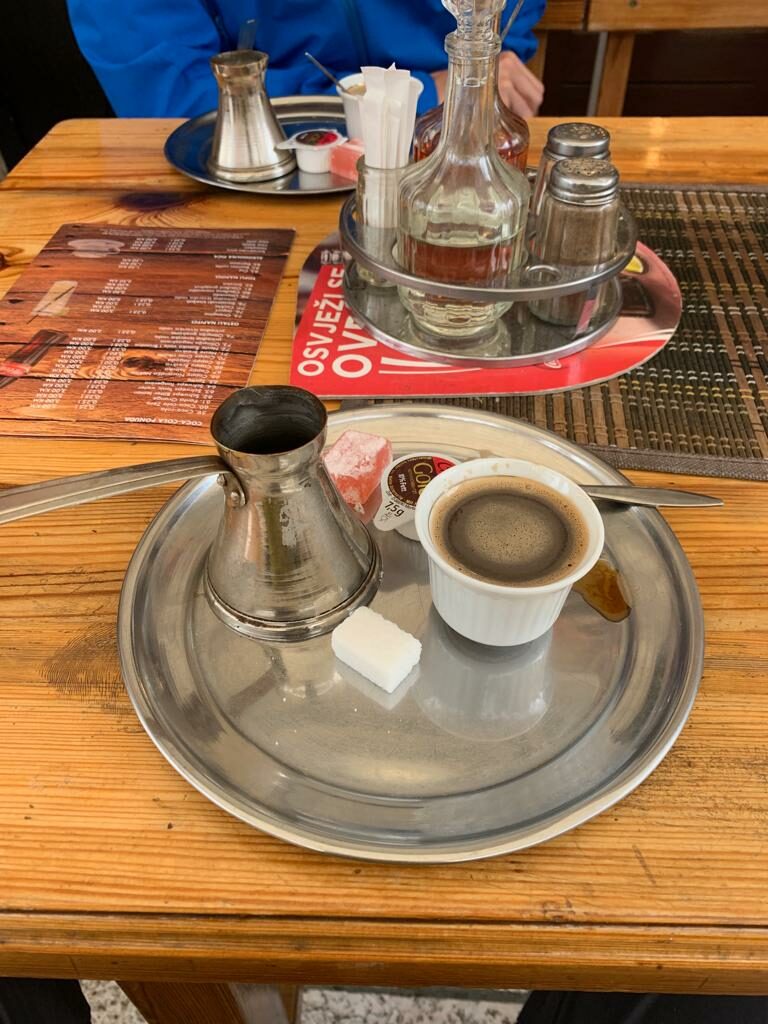
The friendly shopkeeper was nice enough to show us how to do it and polite enough to hold his laughter until we left. We honestly can’t believe this stuff isn’t sold at some pretentious coffee shop in Virginia Highlands.
Then onto the Tunnel Museum tour! With Enes’ guidance once again, we went to the sobering and powerful Tunnel of Sarajevo.
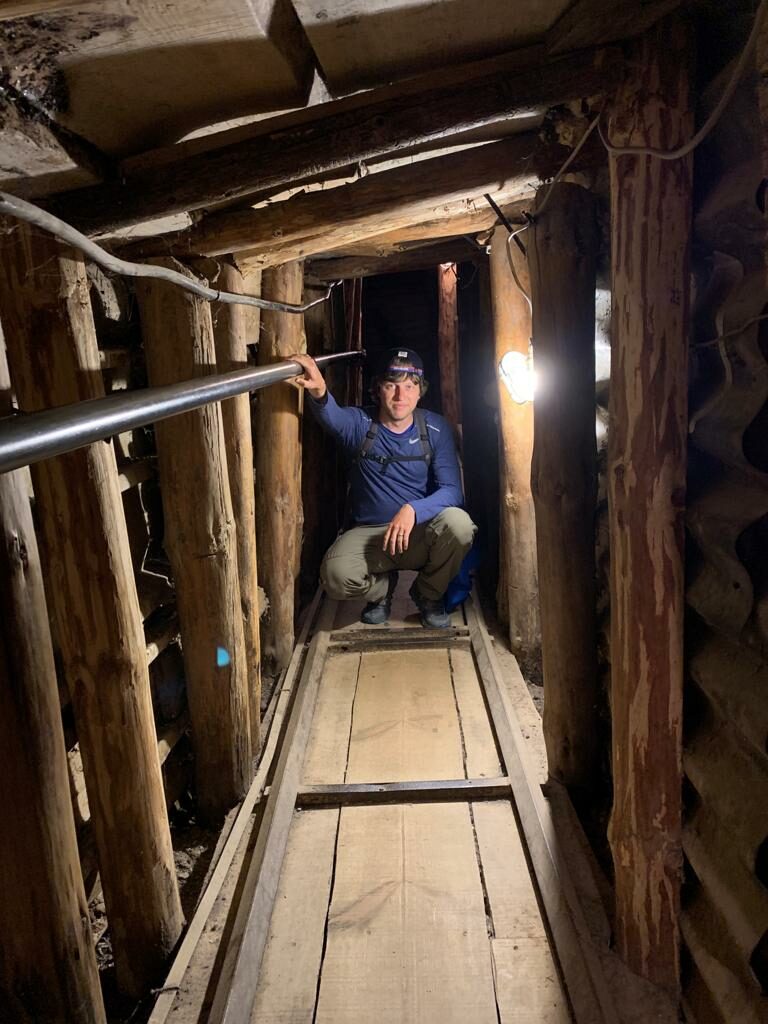
As a reminder for those of you too young to remember (like Jon and I), the Tunnel of Sarajevo is of course the pivotal lifeline to the outside world that kept the inhabitants of the city alive during the nearly 4 year long Siege of Sarajevo in the 90’s. It is really just a mostly collapsed, sodden wooden tunnel that was dug under the airport, but the human stories of suffering, bravery, and perseverance that tell the history of it’s use and role in the siege are impressive. When you watch the little movie about the use of the Tunnel you can see a sweet lady handing out water and tending to gravely wounded soldiers and it looks just like any other war footage or movies you’ve seen a million times before – but then you find out later that lady still works there at the office.
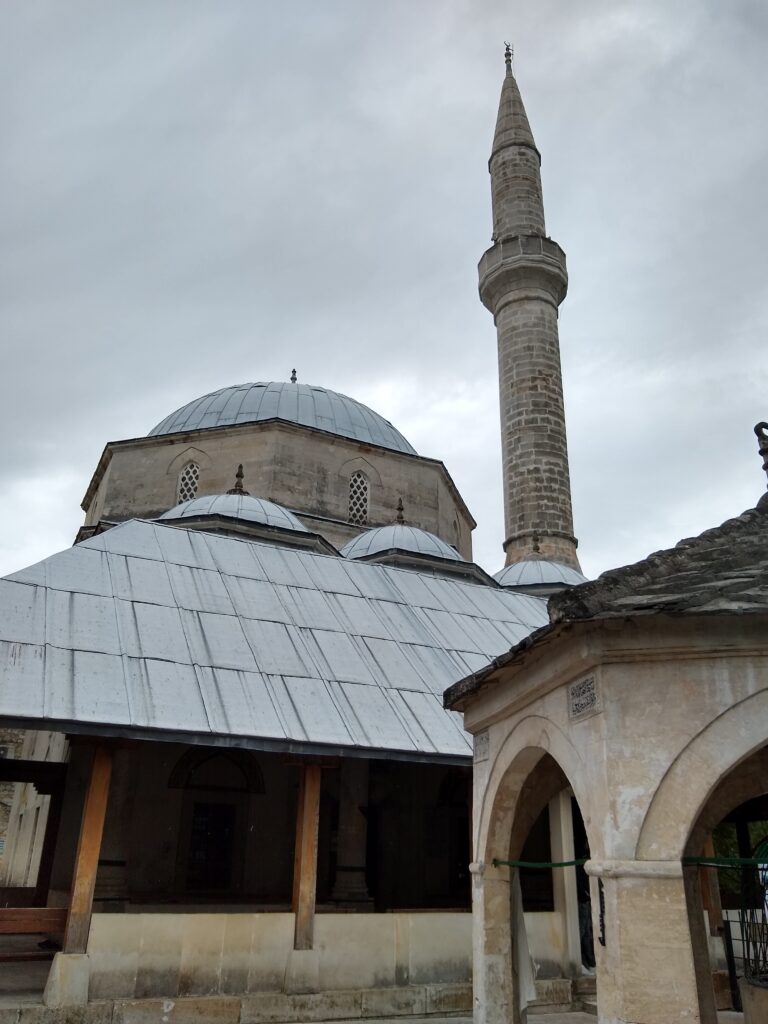
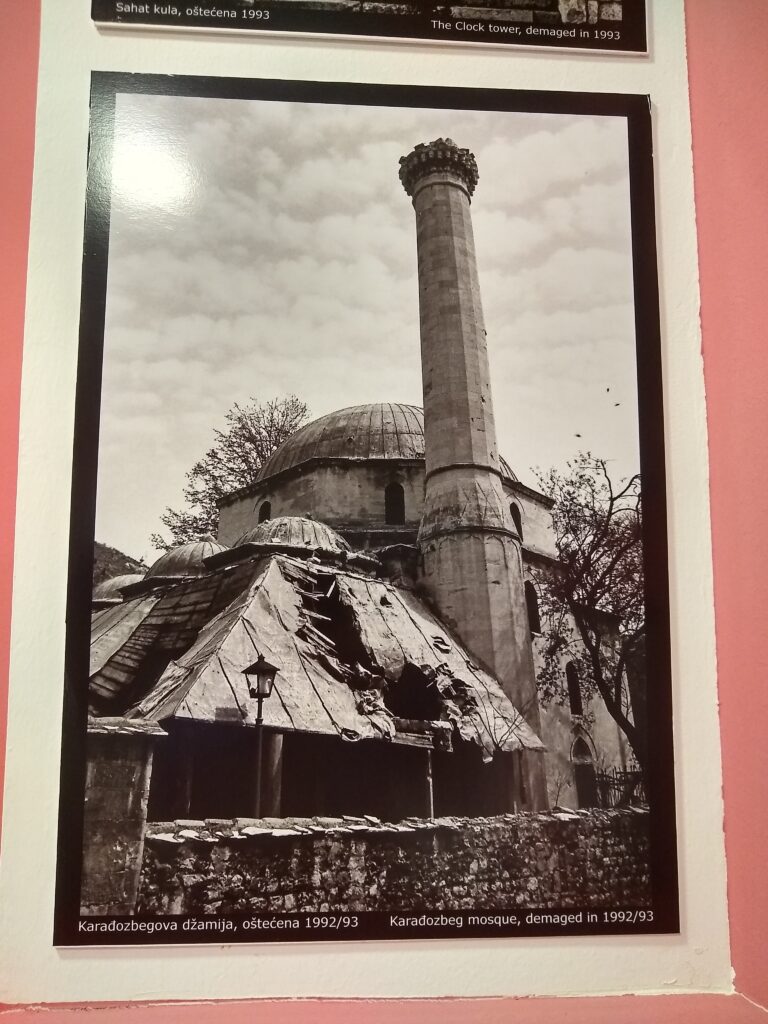
Then you see the street you were just walking down yesterday in the video with bodies laying in it and realize that was (the aptly named) Sniper Alley. The whole experience is really potent, and you can’t help but respect and empathize with the Bosnians when you’re standing down in the tunnel, trying the imaging slogging through it for hours while bombs rain down on your home above.
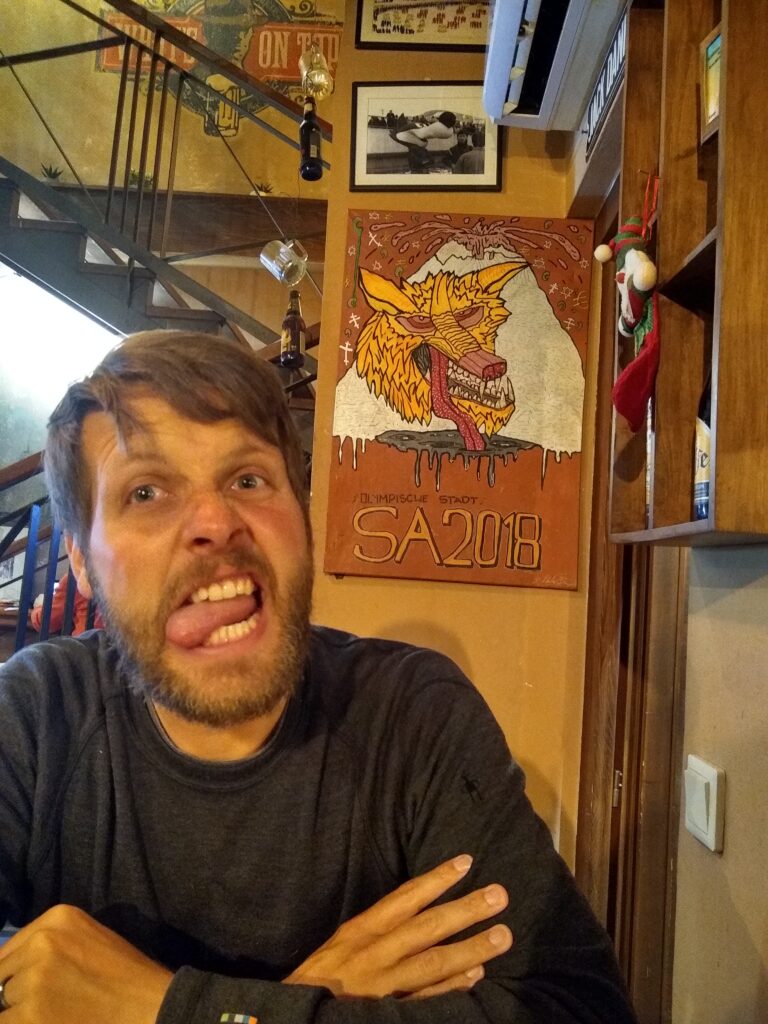
OK, OK, I know it’s a lot but don’t get depressed. The Bosnians aren’t! They are like their city – proud, rebuilt, renewed, and energetic. They were wonderfully welcoming and open and weren’t jaded of tourists like a lot of Western European cities. Sure, it’s a little rough around the edges and there’s still bullet holes in your hostel right along side the roaches, but that just adds to the authenticity. Plus it’s cheap! We drank like 5 beers at Vucko’s for like 11$ – and we do love that little doggie. Overall, Sarajevo was one of our favorite places so far.
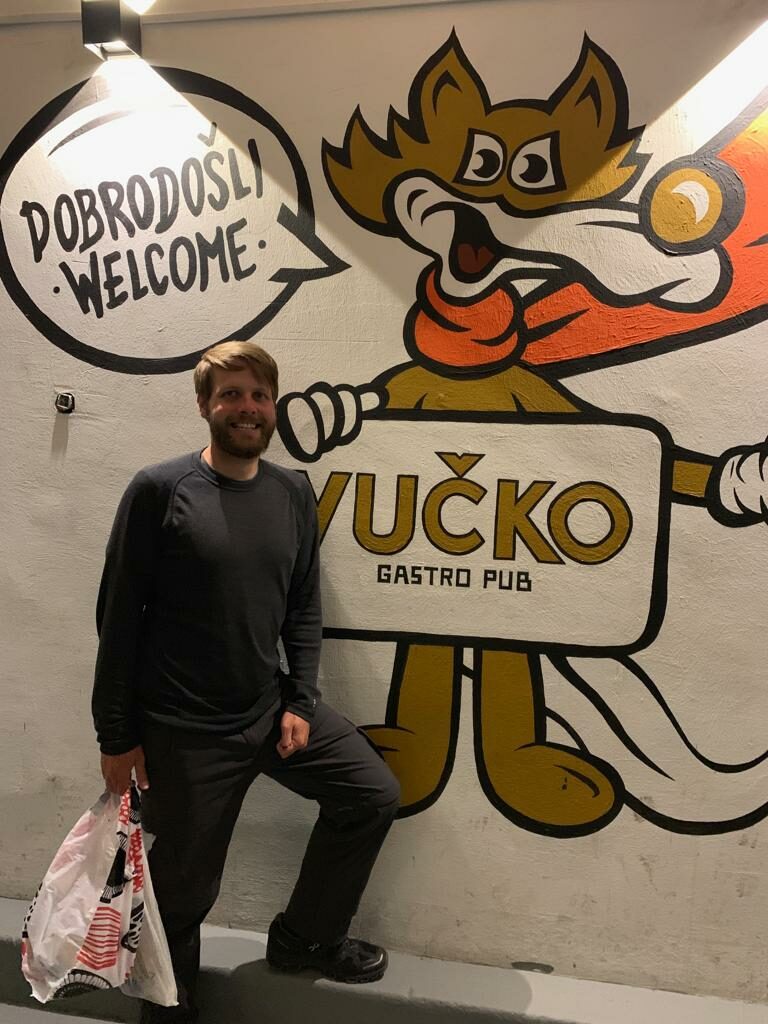
Next came the train to Mostar! Now I know what you’re thinking, but don’t be fooled by those naysaying day trippers who tell you Mostar is nothing but that one famous UNESCO bridge and a few cobblestone streets.
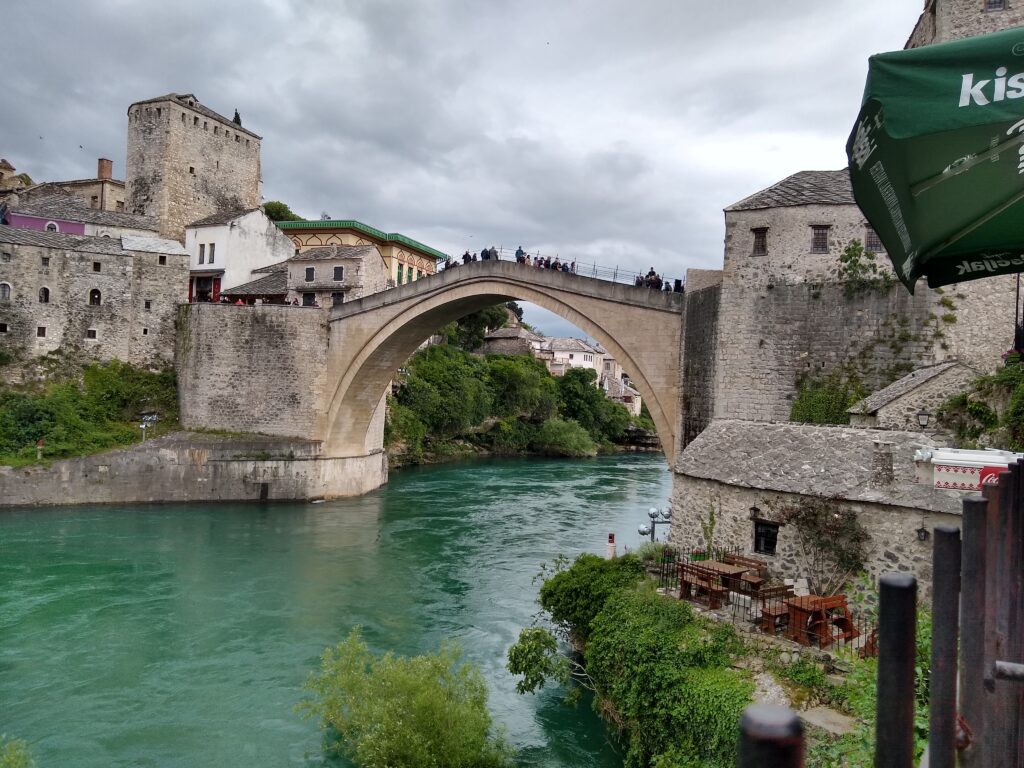
There’s so much more! You can visit the market by the bridge, complete with bridge postcards and bridge models. You can drink Turkish coffee with a romantic view by the bridge.
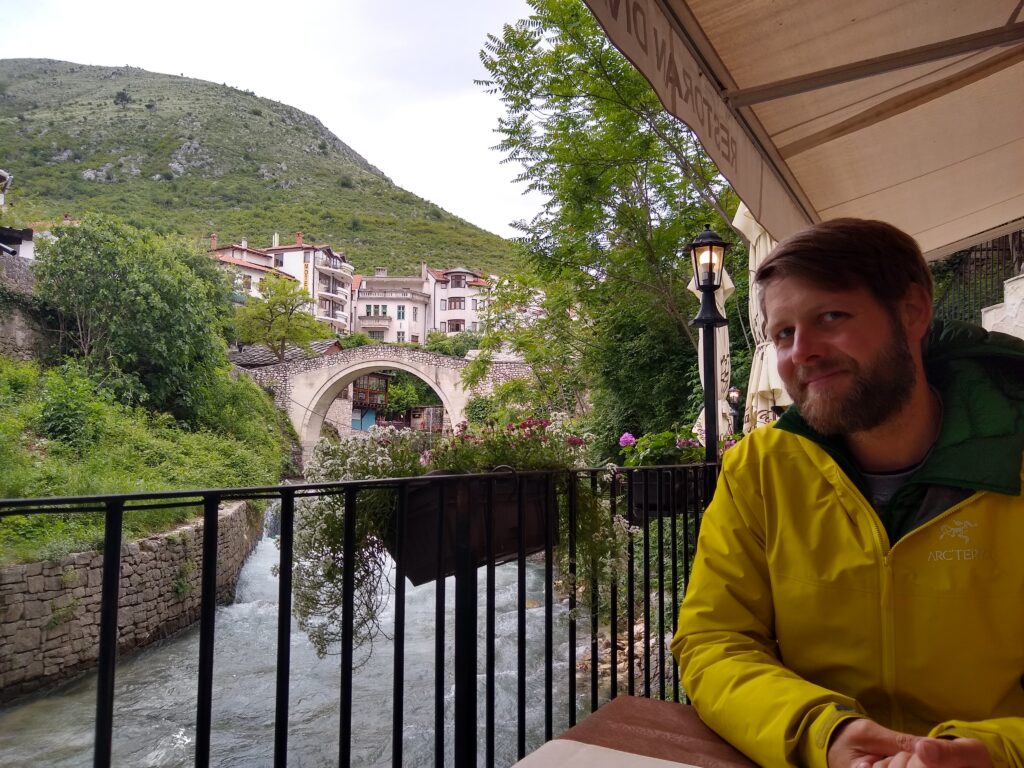
You can climb the famous mosque minaret that overlooks the bridge (and the whole rest of town).
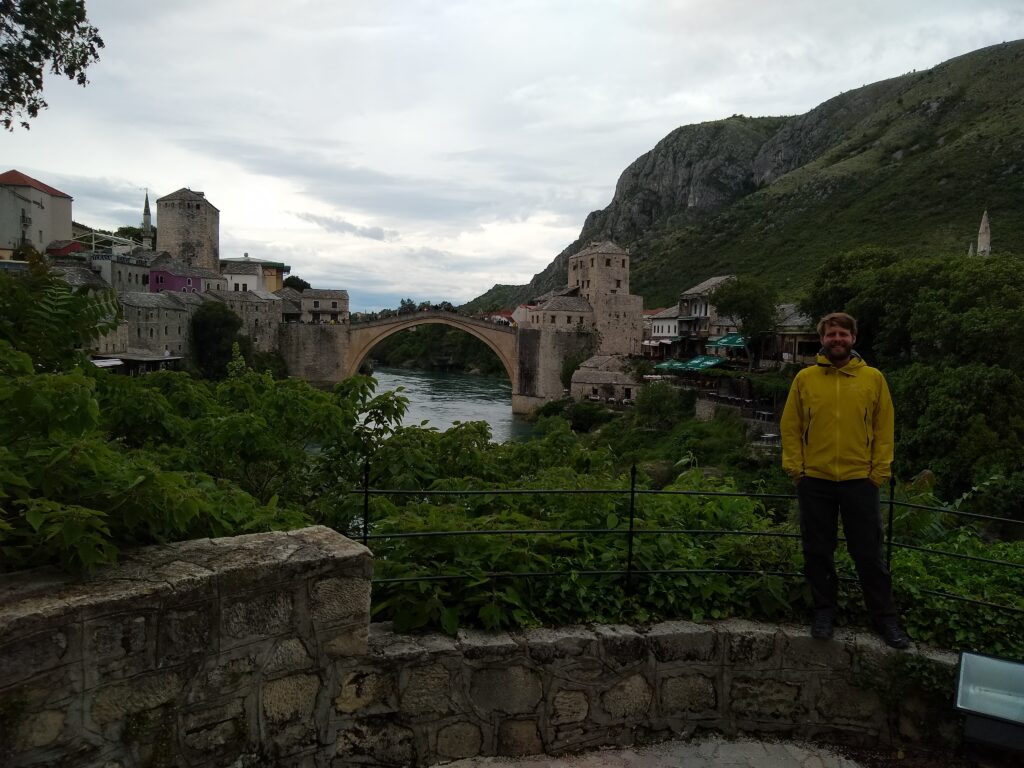
You can climb the mountain, complete with childish stone carvings depicting the cruxifiction, to get even higher views of the bridge.
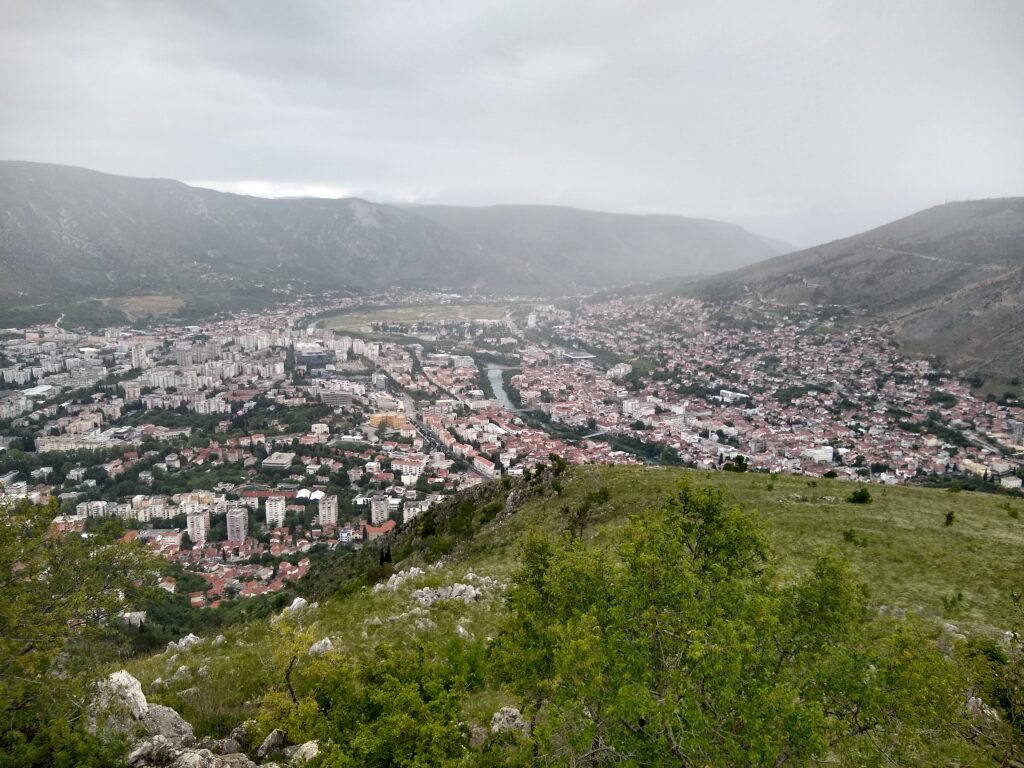
See the bridge from below, even! Why there’s even a miniature, test version of the bridge that was built first and is super cute with it’s own cafes so you can repeat the whole process.
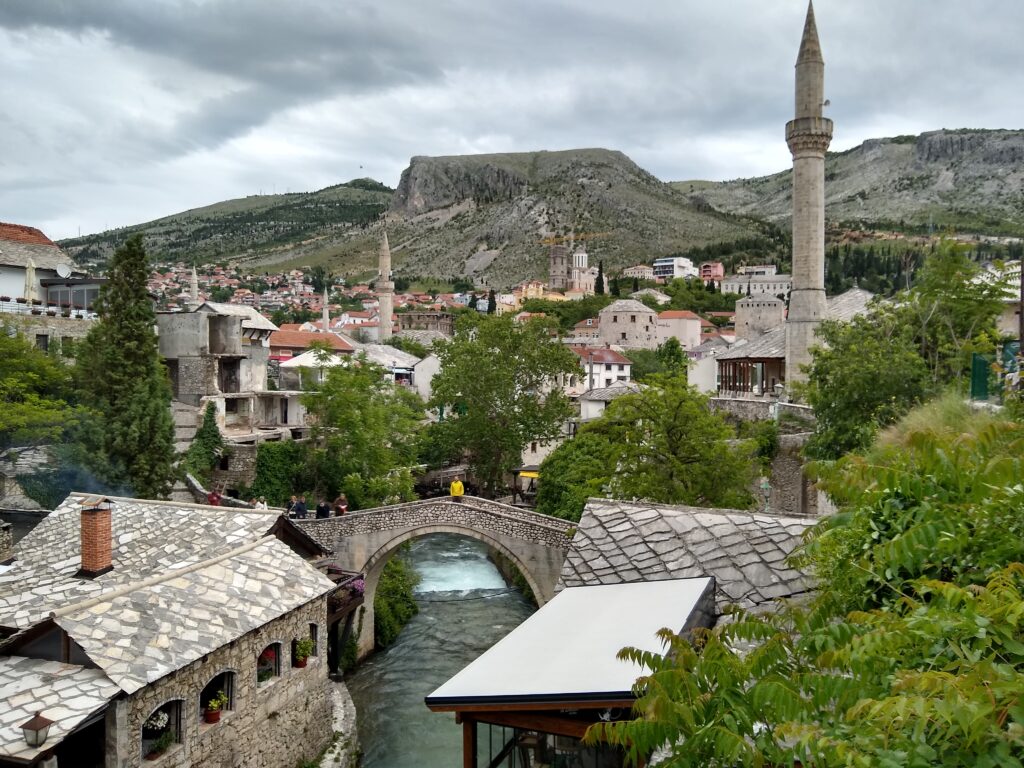
It’s all comin’ up bridge, baby!
In truth though, like in Sarajevo, the real good stuff in Mostar in the people. Again, they are the nicest and most authentic folks we have ever met, but unlike in Sarajevo they are carefully hiding the fact that their city is completely nuts. We learned about it in the free walking tour! Here’s the short version, you can’t even make this up.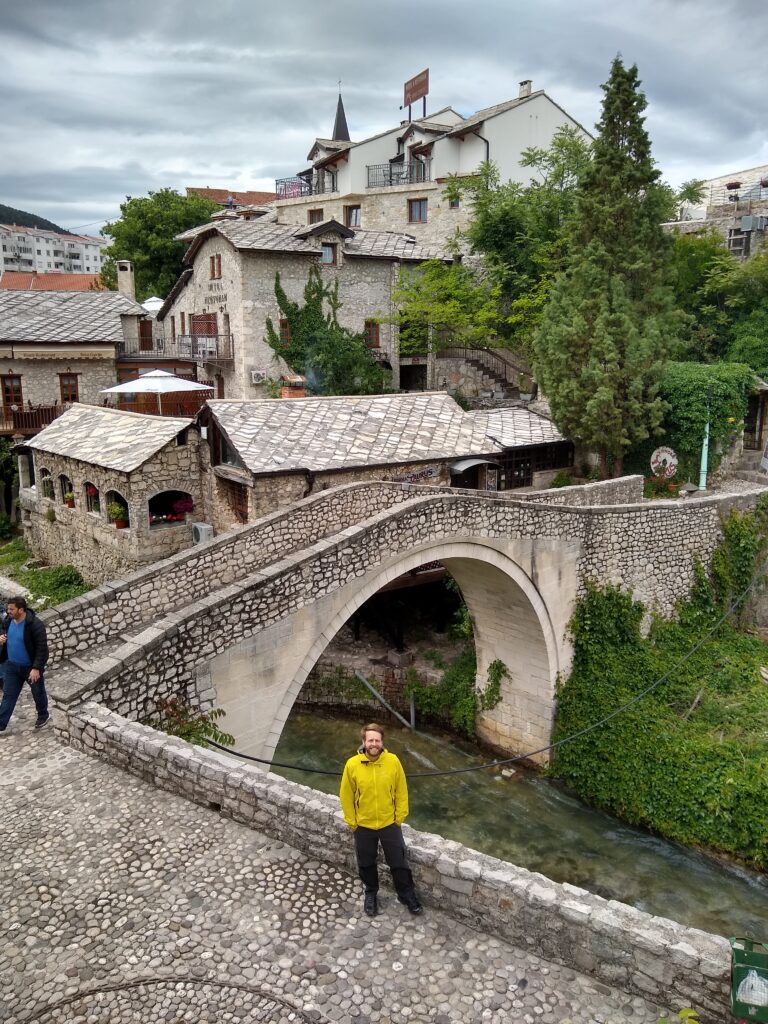
In Mostar, their city came under siege during the breakup of Yugoslavia just like in Sarajevo – except Mostar was attacked by the Croatians, not the Serbs like in Sarajevo. And unlike in Sarajevo where no Serbs still live, the Croats are still living in Mostar. It’s so contentious for the two sides, who were literally killing each other not too long ago, to live in the same city that they have self-segregated into two distinct sides – unironically across the original Frontline that existed during the war.
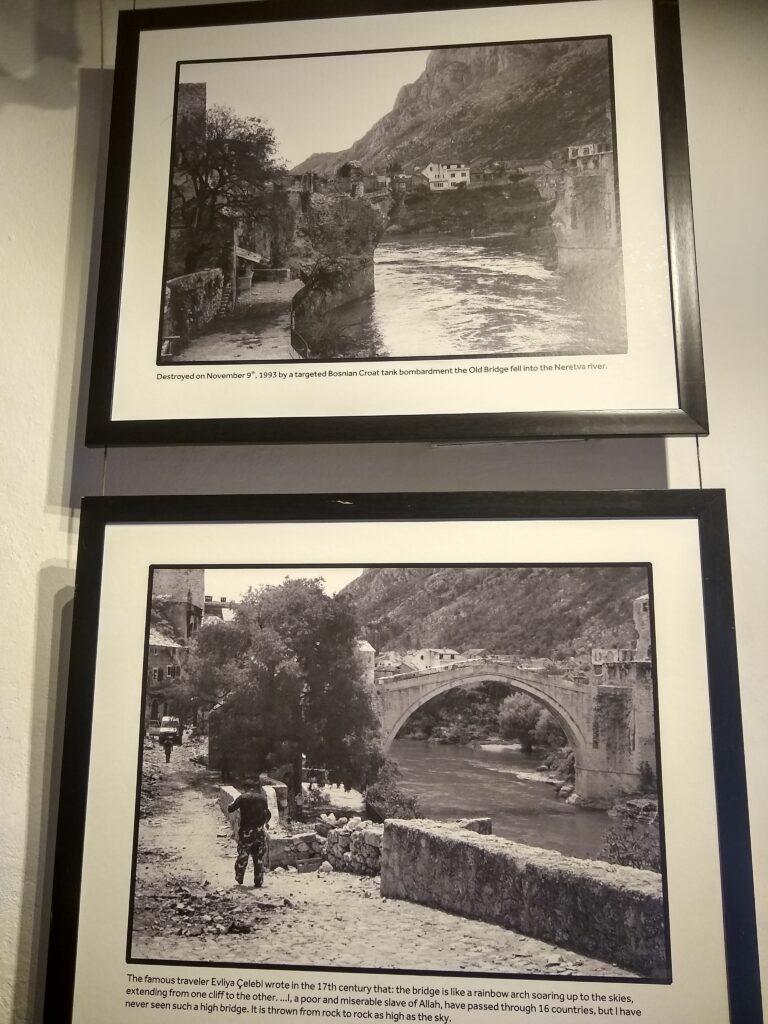
They are so divided that in a city of only 130,000 they have two separate police forces, two schools, two water utilities, two power companies, even two bus systems. You can take a bus on the Bosnian side and it literally will not cross this one street into the Croat side. It’s like Jim Crow segregation in the South only they we’re bombing each other with mortars before the UN made them quit. It’s real confusing if you’re a dumb American and you have no idea who’s who. Except for that one guy who told me to take off my Croatian soccer team hat (go Hajduk!) or somebody was gonna kick my head in – I think that guy was on the Bosnian side.
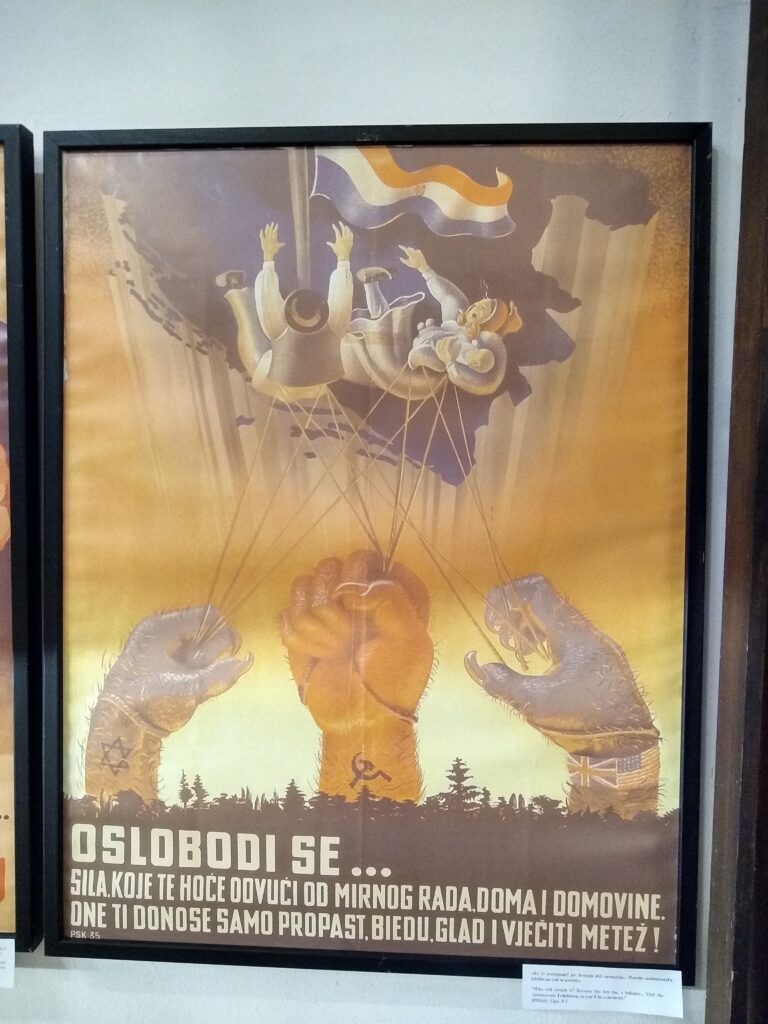
Anyways, we also enjoyed the Mosques, the Jewish history museum, and this one well preserved Turkish house with a freaking jaw dropping common area. It was so damn cozy that now Jon and I want to convert that useless corner in our living room (where the Jesus statue collection would be) into the “Turkish Corner”. Maybe after we have walls and a floor again, am I right?
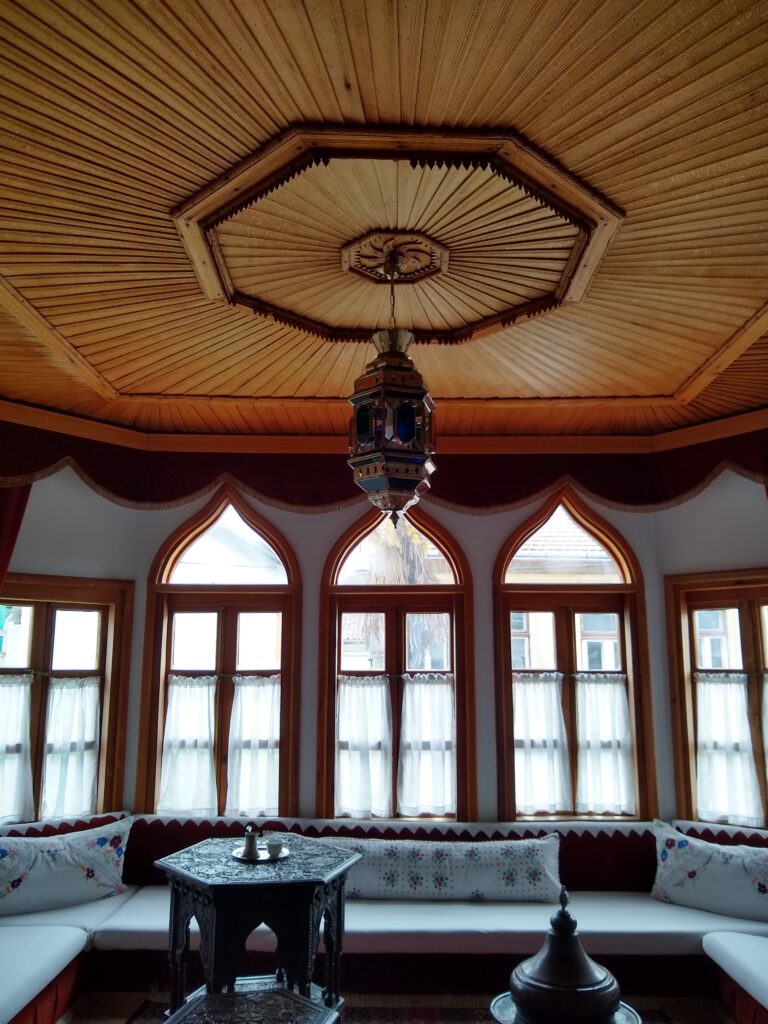
So, after all that we took a bus back into Croatia to the quaint little sea side town of Dubrovnik. Bye Vucko! We’ll miss you!

Love your commentary, Aaron! We’re totally caught up in your adventure and can’t believe how much you’ve seen and done! Glad your head was not kicked in and I agree that you have a perfect place for a Turkish corner ~ and since you’ll be “remodeling” anyway, why not add it ? xxoooxoxox
Loved reading about your trip! We have enjoyed the street life here in Florence, However we arrived on Sunday did a tour on Monday and have to leave today. All the museums are closed on the weekend! But nevertheless we enjoyed this artistic city and its statues, street music and street artists.